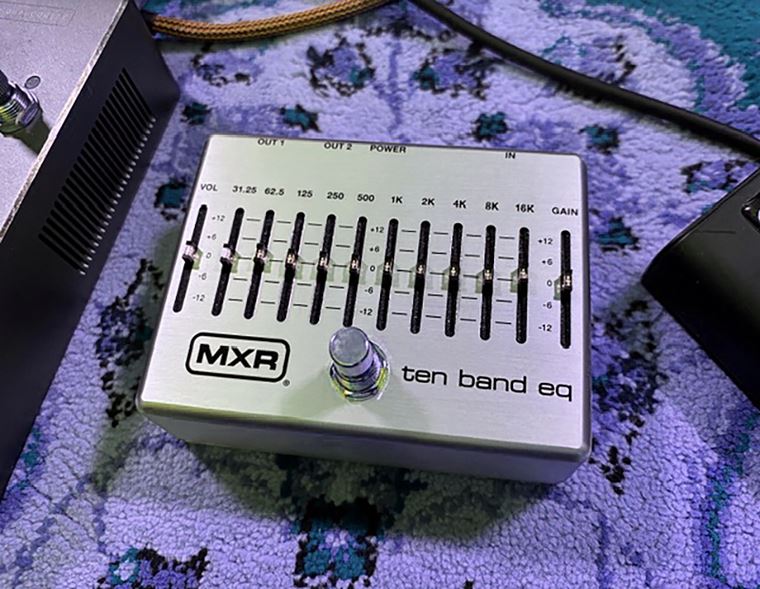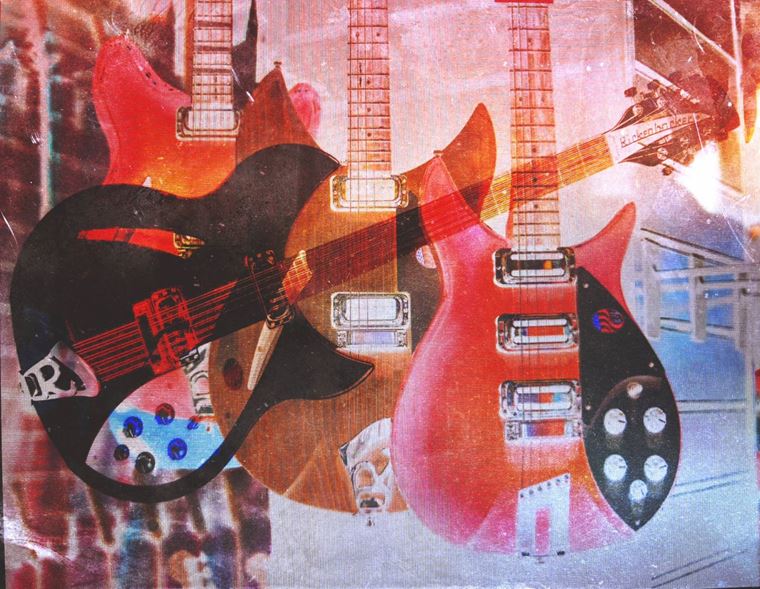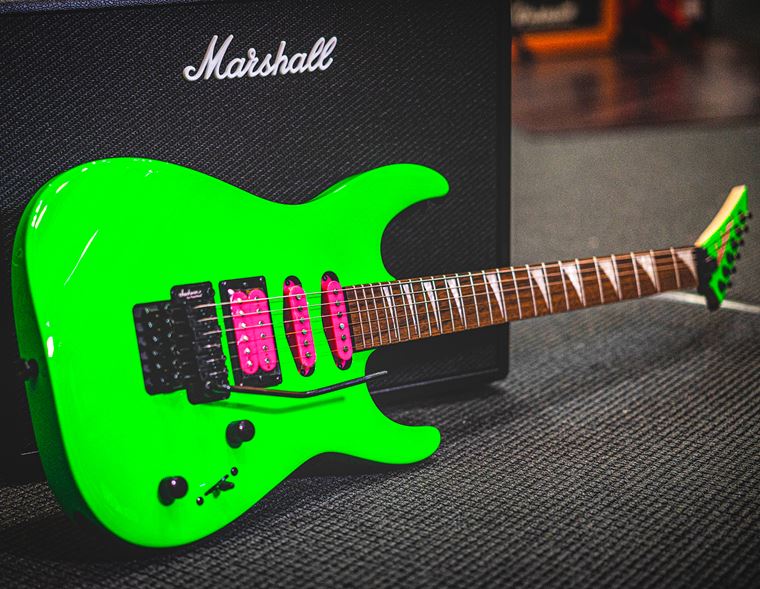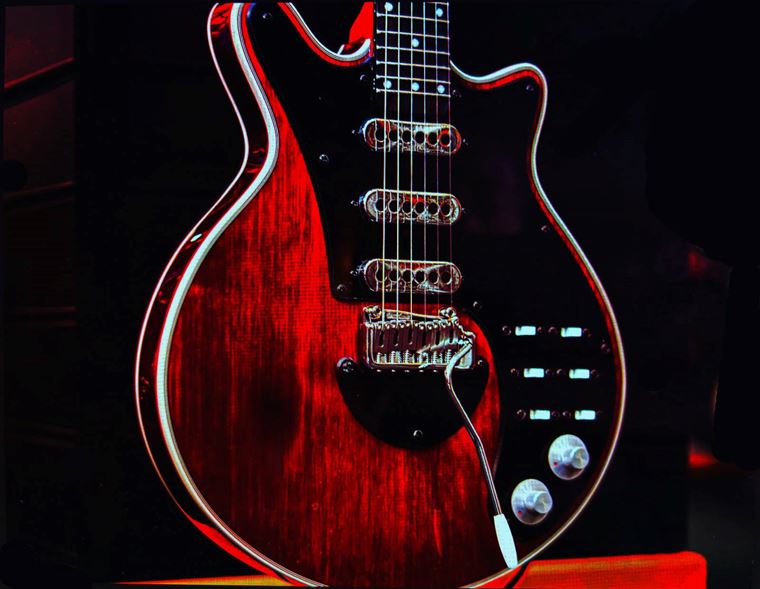Vintage Vault: Electro-Harmonix Electric Mistress Flanger
Published on 20 May 2022
What do these songs all have in common?
- Walking on the Moon by the Police
- Barracuda by Heart
- Are Friends Electric? By Gary Numan/Tubeway Army
- Unchained by Van Halen
- Spirit of the Radio by Rush
- Last Dance by The Cure
The first answer, of course, is that they are all amazing tunes, right? More pertinently for this blog, though, they also make fantastic use of the flanger effect on the guitar parts. Yes, Andy Summers fans, that is not a chorus he’s using on Walking on the Moon but an Electro-Harmonix Electric Mistress, the world’s first flanger pedal!
The arrival of a lovely old vintage Electric Mistress in our Epsom store has prompted this look back at the effect, both generally and the original EHX models in particular. But first: what even is a flanger?
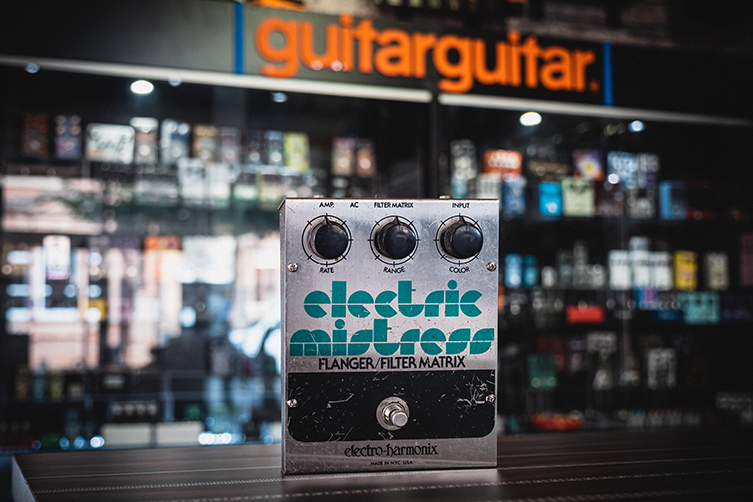
What is a Flanger?
What’s a flanger? Good question! Even though there are unquestionable ‘flanger moments’ in plenty of songs, we understand the confusion in identifying flangers in music, simply because of the variety of sounds they can make. A chorus pedal seems to always sound like a chorus pedal, but flangers can sound both subtle (in fact, very much like chorus pedals) and massive like jet engines from space rockets, depending on how you set them! So, what’s going on? What is a flanger?
In the olden days, before the internet and shops that sold only churros and ice cream, fancy effects were achieved only through hard work and invention. Flanging was initially achieved in the studio when a given recording would be copied to an additional tape reel. The two parts would play simultaneously and the engineer would literally put his fingers on the tape (on the part of the tape machine called ‘the flange’, fact fans) of one reel. This slowed the travel of the tape, causing a very unusual and cool sound to occur. Think of Bold as Love by Jimi Hendrix for an early example of this in action.
These days, a flanger is an electronic effect, and is part of the modulation family alongside chorus and phaser effects. Although these effects all sound fairly different, they achieve their sounds in a similar manner. Firstly, the signal is split into two parts. One part carries on as usual, while the other part is altered and then put back together with the first part. What you hear is the blend of these two signals, with the pedal’s controls determining certain characteristics like speed and so on.
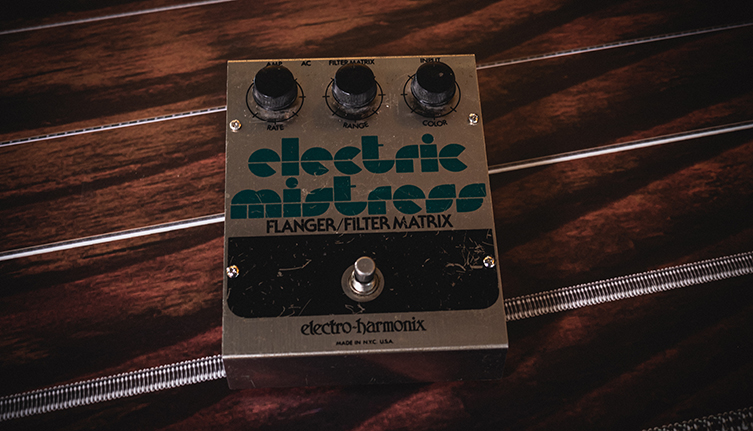
With a phaser, the phase of one part of the signal is reversed, and that famously thick, chewy sound is the result (there’s a ‘notch’ in the sound where the opposite phases meet and this is swept along the frequencies of the signal, making the sound ‘move’).
A chorus pedal splits the signal and delays one of them slightly, creating movement when the two parts are rejoined. This is what creates the movement and texture of the sound.
Flangers actually do the very same thing, but with one difference: chorus effects simply employ a slightly longer delay than flangers, and that change translates to the potentially huge difference in effect.
The World’s First Flanger Pedal
Electro Harmonix are big pedal pioneers, as we know. Amongst numerous other industry firsts, their Electric Mistress Flanger/Filter Matrix, designed in 1975-6 by David Cockerell, was the first ever flanger to be made in a pedal format. Finally, musicians could take a flanger effect on stage with them and change the settings in real time!
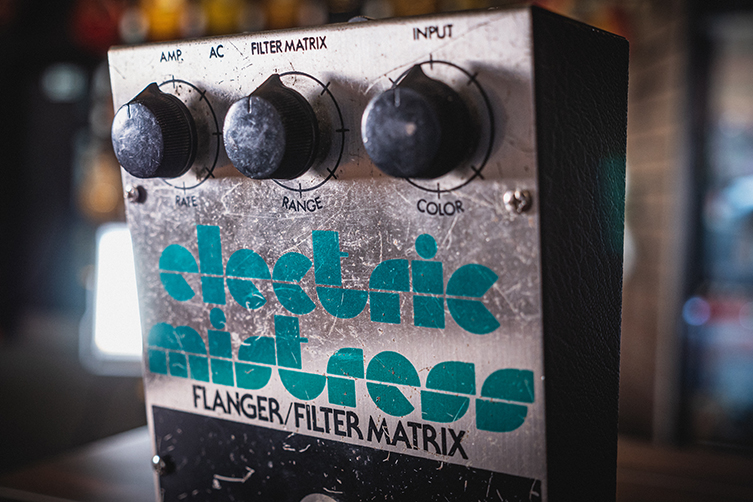
We currently have a vintage example of this historic pedal available, and it was this acquisition that inspired today’s blog! From David Gilmour to Andy Summers, Adrian Belew to J Mascis, a huge range of influential musicians from various walks of life have made contributions to culture using an Electric Mistress. There were five versions of Electric Mistress made in the 70s and 80s, not even including the Deluxe model that debuted in 1978! It featured a different chassis, a fixed mains cable and some circuit tweaking by designer Howard Davis. Each variation of Mistress still created that inimitable, ethereal sound, though: airy, ghostlike textures, swirls, jet-engines take-off noises, atonal warbles and space-age laser sounds: the Electric Mistress was and is a cornucopia of fun for the bold sound designer and artistic player.
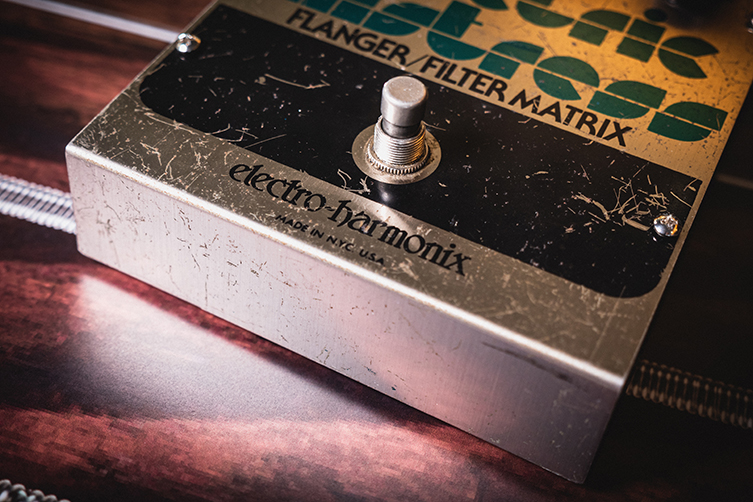
This was all made possible with ‘bucket brigade’ (BBD) technology. Bucket Brigade is the name for a style of chip that uses several capacitors that each delay the audio signal passing through it. The name comes from the analogy of traditional firefighters passing buckets of water down a line, with a little water being dropped each time, just like the BBD circuit delays the signal and affects the tone. As the signal is passed from chip to chip, noise is inevitably introduced as a byproduct. To counter this, pedal engineers built in compressor circuits and simple filters ahead of the BBD chain, and an additional filter (as well as an expander) after the BBD part. These elements thicken up the sound and apply what we’d now call a ‘band pass filter’ to the end result, which we’d otherwise translate as a ‘warm and organic’ sound.
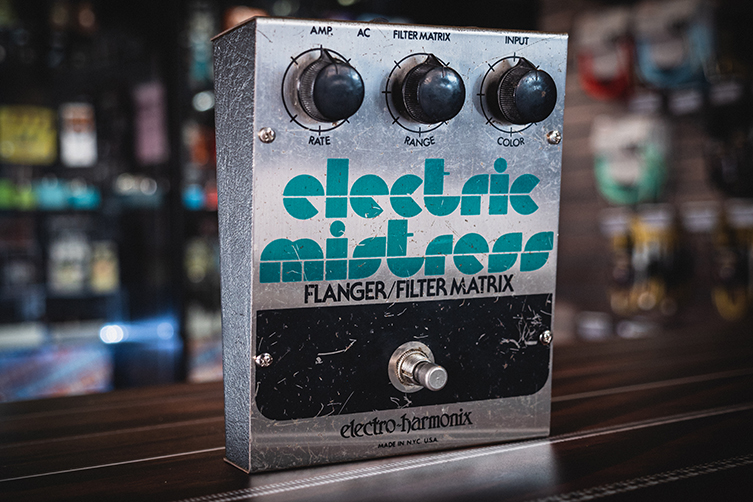
Normally, BBD technology is spoken about in reference to analog delay pedals, but modulation effects from the 1970s used these too, in place of the missing pair of studio tape reels. Thus, the flanger developed into a bolder proposition altogether, especially in the hands of Electro-Harmonix! The New Yorker trailblazers have rightfully earned their reputation for going further than any other pedal makers (a record which is still pretty much held now, over 50 years after their inception) dare, and even in its first iteration, the Electric Mistress offered features that no one else did…
Filter Matrix
The main innovation in this vintage first version Electric Mistress - and made available on subsequent versions - is the Filter Matrix. Located on the top of the pedal chassis in between the input and output sockets is a small switch. This operated the Filter Matrix and when engaged, it ‘freezes’ the flanger at whichever part of the frequency sweep the signal was currently at. It’s a very distinctive sound, and quite a difficult one to describe without just saying something useless like ‘a flanger tone with no sweep’, which of course is exactly what it is! It’s a very cool way of making leads and solos stand out, particularly if you find a ‘freeze’ point that is harmonically working with whichever song you’re playing. Trust EHX to find extra cool features to include in an already game-changing invention.
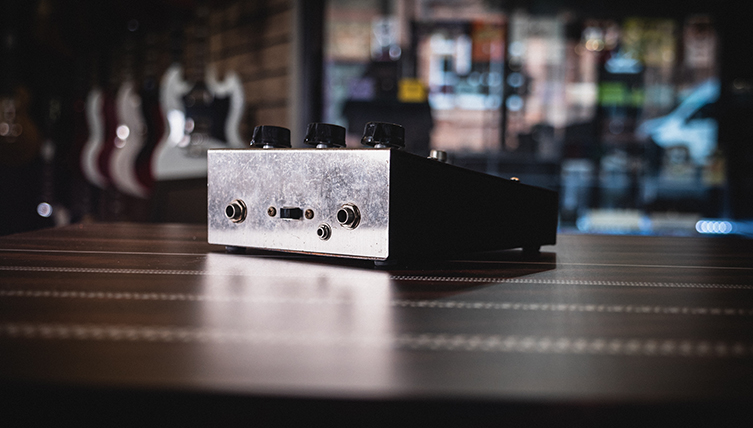
Flangers Today
Like many effects units, the flangers you’ll find today for sale aren’t too far removed from classics like this Electric Mistress. We are a retro-obsessed bunch of musicians, after all, and so many of the current choices pay close attention to the pioneering pedals of the past. Alongside acknowledged classics from BOSS and MXR, you’ll find some excellent boutique flangers from brands like Walrus Audio and Solid Gold FX who push the boundaries of what can be achieved with a flanger.
Do you need some ethereal whoosh in your life? Is your pedalboard missing a dramatic jet engine option? Browse our flanger pedal offerings below and expand your sound.
Click to Shop our Flanger Pedals


